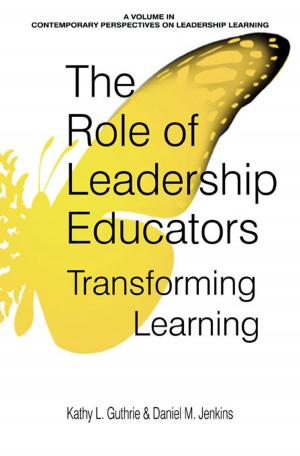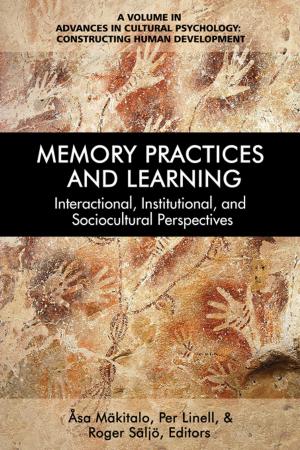Outcomes of High-Quality Clinical Practice in Teacher Education
Nonfiction, Reference & Language, Education & Teaching, Educational Theory, Testing & Measurement, Teaching, Teaching Methods| Author: | ISBN: | 9781641133777 | |
| Publisher: | Information Age Publishing | Publication: | July 1, 2018 |
| Imprint: | Information Age Publishing | Language: | English |
| Author: | |
| ISBN: | 9781641133777 |
| Publisher: | Information Age Publishing |
| Publication: | July 1, 2018 |
| Imprint: | Information Age Publishing |
| Language: | English |
For decades teacher education researchers, organizations, and policy makers have called for improving teacher education by creating clinically based preparation programs (e.g. CAEP, 2013; Goodlad, 1990; Holmes, 1986, 1995; National Association for Professional Development Schools, 2008; National Council for the Accreditation of Teacher Educators, 2001, 2010; Zeichner, 1990). According to the NCATE Blue Ribbon Report (2010), this approach requires extensive opportunities for prospective teachers to connect and apply what they learn from school and university based teacher educators. Similar to preparing medical professionals, clinical practice in teacher education requires the complex and time intensive work of supporting teacher candidate ability to link theory, research, and practice as well as on-going inquiry into best pedagogical practices. Therefore, clinically intensive programs expect prospective teachers to blend practitioner and academic knowledge throughout their programs as "they learn by doing" (NCATE, 2010, p.ii). However, most of the literature to date on clinical practice has been conceptual and often relies on describing program design. The purpose of this book is move past description to study and understand what teacher education programs are learning from research about innovative clinical models of teacher education. Each book chapter highlights research about how programs are studying a variety of outcomes of clinical practice. After an introductory chapter that helps to define and situate clinical practice in teacher education, the book is organized into four sections: (1) Outcomes of New Roles, (2) Outcomes of New Practices, (3) Outcomes of New Coursework/Fieldwork Configurations, and (4) Outcomes of New Program Configurations. The book wraps up with a discussion that looks across the chapters to find common themes, share implications for teacher educators, and set the course for future research.
For decades teacher education researchers, organizations, and policy makers have called for improving teacher education by creating clinically based preparation programs (e.g. CAEP, 2013; Goodlad, 1990; Holmes, 1986, 1995; National Association for Professional Development Schools, 2008; National Council for the Accreditation of Teacher Educators, 2001, 2010; Zeichner, 1990). According to the NCATE Blue Ribbon Report (2010), this approach requires extensive opportunities for prospective teachers to connect and apply what they learn from school and university based teacher educators. Similar to preparing medical professionals, clinical practice in teacher education requires the complex and time intensive work of supporting teacher candidate ability to link theory, research, and practice as well as on-going inquiry into best pedagogical practices. Therefore, clinically intensive programs expect prospective teachers to blend practitioner and academic knowledge throughout their programs as "they learn by doing" (NCATE, 2010, p.ii). However, most of the literature to date on clinical practice has been conceptual and often relies on describing program design. The purpose of this book is move past description to study and understand what teacher education programs are learning from research about innovative clinical models of teacher education. Each book chapter highlights research about how programs are studying a variety of outcomes of clinical practice. After an introductory chapter that helps to define and situate clinical practice in teacher education, the book is organized into four sections: (1) Outcomes of New Roles, (2) Outcomes of New Practices, (3) Outcomes of New Coursework/Fieldwork Configurations, and (4) Outcomes of New Program Configurations. The book wraps up with a discussion that looks across the chapters to find common themes, share implications for teacher educators, and set the course for future research.















